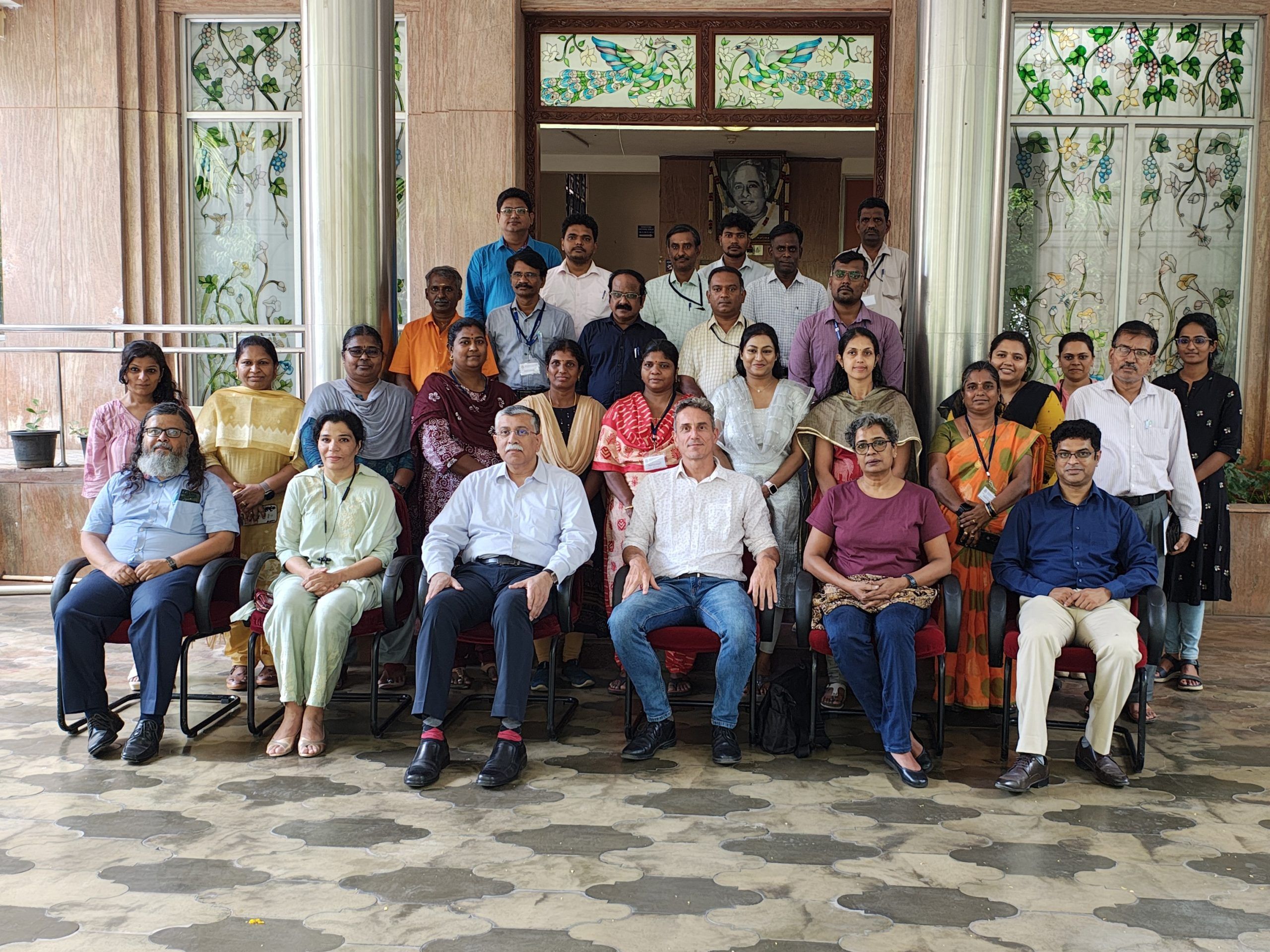Training for Heat Adaptation:
Building Cooler, Resilient Cities in Tamil Nadu
Chennai, a key industrial center in southern India, faces intense heat waves each year. Home to over 12 million, the city’s dense population, along with high-density urban development and shrinking green cover are driving a sharp rise in local temperatures. In this context, integrating passive and ecosystem-based cooling solutions has become more critical than ever to safeguard public health and advance sustainable urban development.
From 25-27 June 2025, a capacity building program titled “Training for Heat Adaptation in Cities and Buildings with Passive and Ecosystem Approaches for Cooling,” was held at the Anna Administrative Staff College. The training was a joint effort by the United Nations Environment Programme (UNEP) Cool Coalition and the Swiss Development Cooperation (SDC), to equip Tamil Nadu government officials with knowledge and tools to implement passive cooling solutions.
The opening remarks were delivered by Mr. Vikram Kapur, Director, Anna Administrative Staff College, who highlighted the anthropogenic causes contributing to urban heat. He also stressed the responsibility and capacity of both government agencies and individuals to mitigate these impacts. This was followed by session by Ms. Aarti Nain, Advisor to the UNEP India Urban Cooling Program, who provided a comprehensive overview of sustainable cooling efforts in India. She outlined key challenges in implementing climate-friendly cooling solutions, along with short- and long-term recommendations and best practices from the India Cooling Action Plan.
Understanding Urban Heat Islands and their Impact
Professor Rajan Rawal, Senior Advisor at CARBSE, CEPT University, delivered an in-depth session on the Urban Heat Island (UHI) effect. He explained key contributing factors such as urban geometry, surface properties, lack of green cover, and human activity. Emphasizing the critical role of urban planners and designers, he discussed tools and techniques for mitigating UHI through thoughtful design and planning. Key takeaways included the importance of optimizing building design for heat mitigation, integrating green infrastructure, and understanding hyperlocal heat data. The session also explored the secondary impacts of UHI, including reduced productivity, decreased livestock output, and the underreporting of heat-related deaths.
Climate-Responsive Building Design and Low-Carbon Materials: Insights and Applications
Ms. Suhasini Ayer, Architect & Urban Planner, Professor Durganand Balsavar, Senior Advisor, UNEP, and Professor Rajan Rawal led a panel discussion with the participants on climate-responsive design of buildings and cities with low-carbon materials. The focus was on integrating thermal comfort through master planning, passively cooled buildings and using sustainable, cost-effective building materials.
Ms. Ayer detailed how urban heat is shaped by various spatial and temporal aspects and highlighted the long-term costs of compromising on climate-responsive design, noting challenges within existing building construction regulations. The panel underscored the roles of planners and designers in integrating shading, natural ventilation, and green infrastructure into urban form.
To illustrate these principles, Ms. Ayer presented the example of the Humanscapes, a project in Auroville that combines the integration of climate-responsive urban forms, strategic shading, natural ventilation, and the use of local materials to achieve thermal comfort and sustainability. On the workshop’s third day, participants visited Humanscapes, Auroville Earth Institute and Revelation Forest.Revelation Forest, one of the more densely afforested communities of Auroville was also shown to trainees to demonstrate the impact of thoughtful species selection and landscape design in moderating temperature and humidity.
Throughout the training, experts stressed designing buildings and neighborhoods that protect, support, and enhance heat adaptation by addressing water management, energy efficiency, topsoil preservation, vegetation, shading, and resilience to extreme weather.
Policy, Planning, and Implementation
This interactive session engaged participants in a discussion on essential policy interventions for heat resilience, noting that heat is a state-specific disaster. Participants explored urban planning strategies such as creating green spaces (with considerations for water use and wind flow) and improving “sky view” to facilitate heat radiation. The opportunity of balancing rapid housing development with heat mitigation was also assessed. Trainees revied the opportunities such as leveraging the potential for social capital to aid heat management and the need for region-specific building codes with the expert trainers.
Towards a Cooler Tamil Nadu
The training reinforced the Cool Coalition’s commitment to building heat-resilient cities by equipping government officials with practical knowledge and scalable solutions for extreme heat adaptation. It stressed extreme heat as not just an environmental priority, but also a critical public health and economic imperative. Supported by the Swiss Agency for Development and Cooperation, the BeCool project is supporting passive and ecosystem-based cooling through policy, planning, and pilot demonstrations across Tamil Nadu and other states in India.

